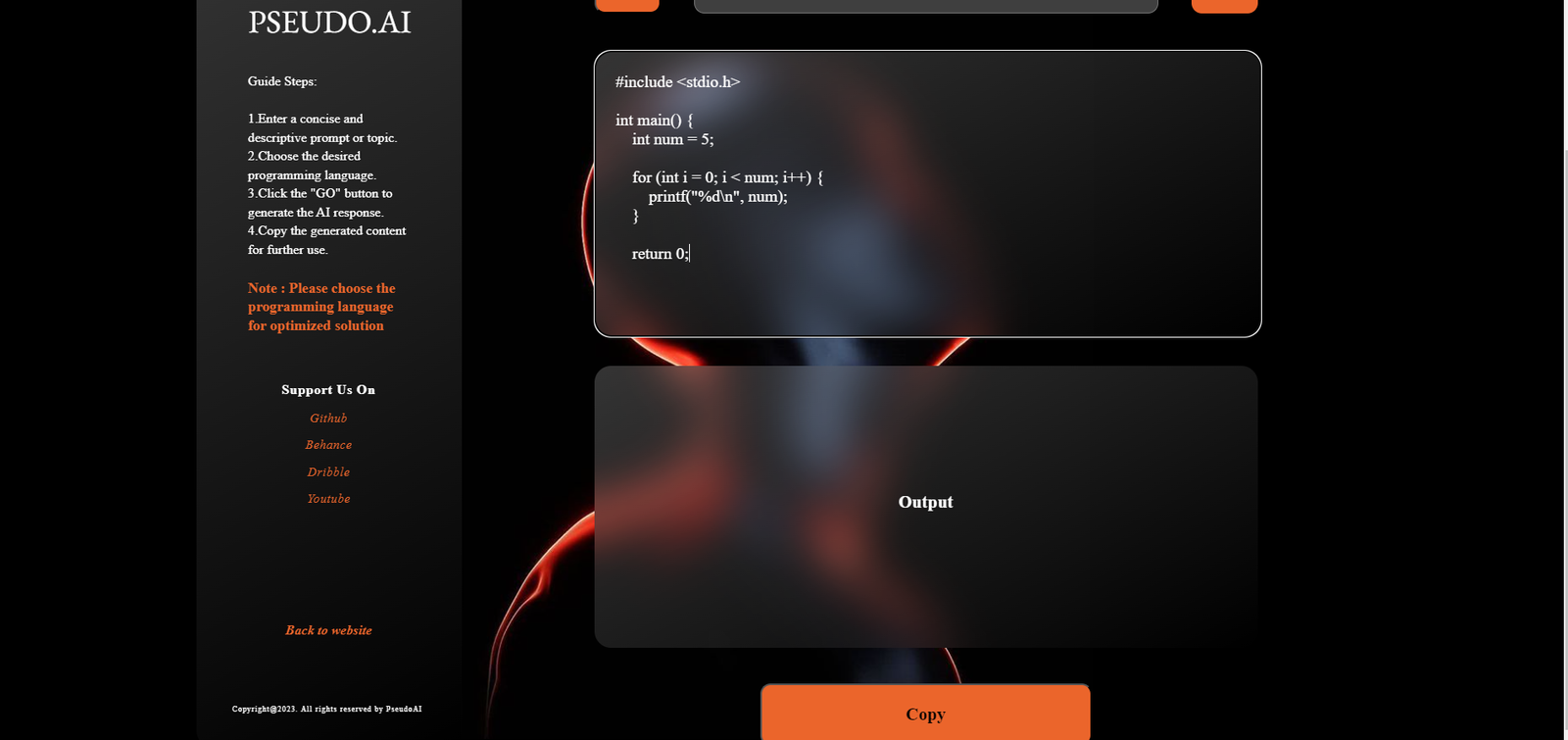Description
Key Features:
- Source Code to Pseudocode: Transforms intricate code into understandable pseudocode.
- Multi-Language Support: Compatible with languages such as Java, Python, C++, JavaScript, and more.
- Web-Based Interface: Accessible through any browser without the need for installation.
- Real-Time Conversion: Provides instant conversion results to streamline workflow.
Benefits:
- Improves Code Comprehension: Makes complex code accessible for all team members, regardless of their technical expertise.
- Facilitates Collaboration: Enhances communication between developers, educators, and non-technical stakeholders by providing a clear understanding of code logic.
- Educational Tool: Acts as a valuable resource for teaching programming concepts and structures to students.
Target Audience:
- Developers: Beneficial for both beginners and experienced developers needing to simplify code.
- Educators: Aiding in teaching code structures and logic to students.
- Project Managers and Stakeholders: Helping non-technical team members understand and contribute to projects.
Use Cases:
Problem Statement:
Understanding and writing complex source code can be difficult, especially for those not familiar with programming languages.
Application:
Pseudo AI converts source code into human-readable pseudocode using AI. It supports multiple programming languages like Java, Python, C++, and JavaScript. The platform is web-based and requires no installation, making it accessible and easy to use for educational purposes and professional development.
Outcome:
Improved code comprehension, enhanced collaboration between developers and non-technical stakeholders, and streamlined coding education.
Industry Examples:
- Education: Helps students understand complex code structures.
- Software Development: Assists developers in explaining code to non-technical team members.
- Technical Writing: Simplifies the creation of technical documentation.
- Project Management: Aids project managers in understanding technical aspects of projects.
- QA Testing: Helps testers understand the logic behind code for better test creation.
Additional Scenarios:
- Data Science: Simplifies pseudocode for data analysis scripts.
- Game Development: Assists in documenting game logic.
- Embedded Systems: Makes hardware-related code more understandable.
- AI Development: Explains complex AI algorithms.
- Cybersecurity: Helps in understanding code for security analysis.




Reviews
There are no reviews yet.